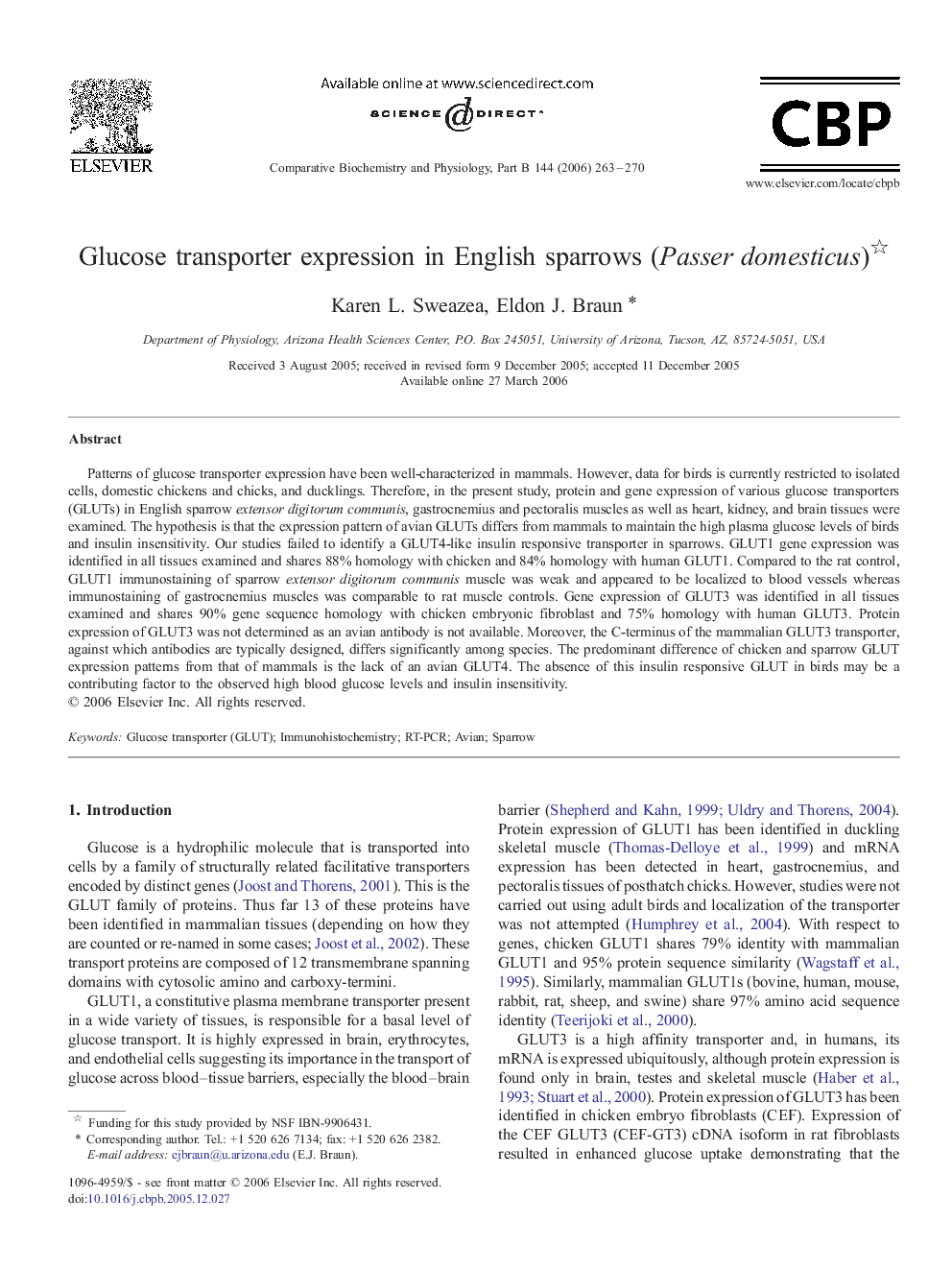| Article ID | Journal | Published Year | Pages | File Type |
|---|---|---|---|---|
| 1976729 | Comparative Biochemistry and Physiology Part B: Biochemistry and Molecular Biology | 2006 | 8 Pages |
Abstract
Patterns of glucose transporter expression have been well-characterized in mammals. However, data for birds is currently restricted to isolated cells, domestic chickens and chicks, and ducklings. Therefore, in the present study, protein and gene expression of various glucose transporters (GLUTs) in English sparrow extensor digitorum communis, gastrocnemius and pectoralis muscles as well as heart, kidney, and brain tissues were examined. The hypothesis is that the expression pattern of avian GLUTs differs from mammals to maintain the high plasma glucose levels of birds and insulin insensitivity. Our studies failed to identify a GLUT4-like insulin responsive transporter in sparrows. GLUT1 gene expression was identified in all tissues examined and shares 88% homology with chicken and 84% homology with human GLUT1. Compared to the rat control, GLUT1 immunostaining of sparrow extensor digitorum communis muscle was weak and appeared to be localized to blood vessels whereas immunostaining of gastrocnemius muscles was comparable to rat muscle controls. Gene expression of GLUT3 was identified in all tissues examined and shares 90% gene sequence homology with chicken embryonic fibroblast and 75% homology with human GLUT3. Protein expression of GLUT3 was not determined as an avian antibody is not available. Moreover, the C-terminus of the mammalian GLUT3 transporter, against which antibodies are typically designed, differs significantly among species. The predominant difference of chicken and sparrow GLUT expression patterns from that of mammals is the lack of an avian GLUT4. The absence of this insulin responsive GLUT in birds may be a contributing factor to the observed high blood glucose levels and insulin insensitivity.
Related Topics
Life Sciences
Biochemistry, Genetics and Molecular Biology
Biochemistry
Authors
Karen L. Sweazea, Eldon J. Braun,
